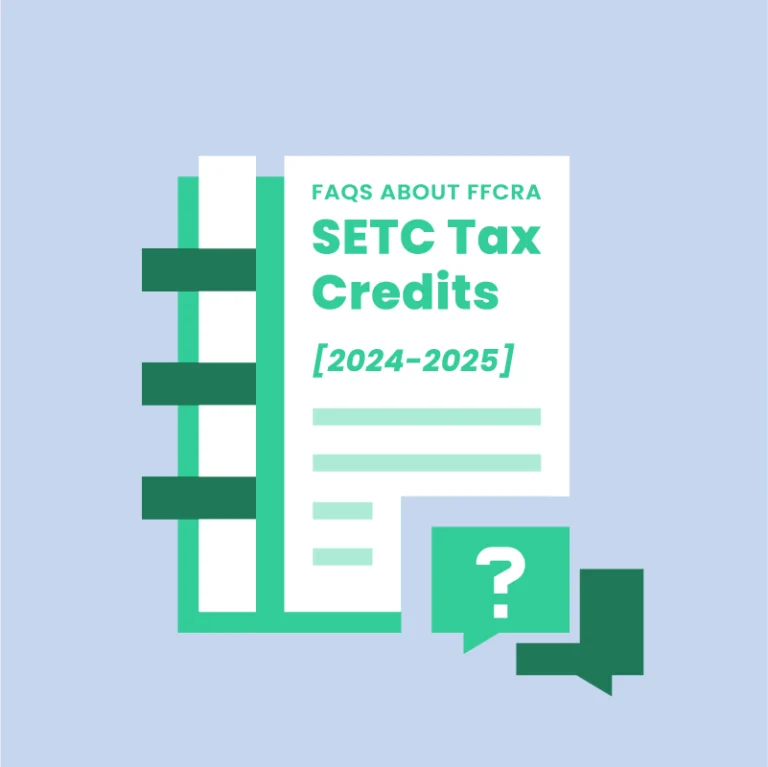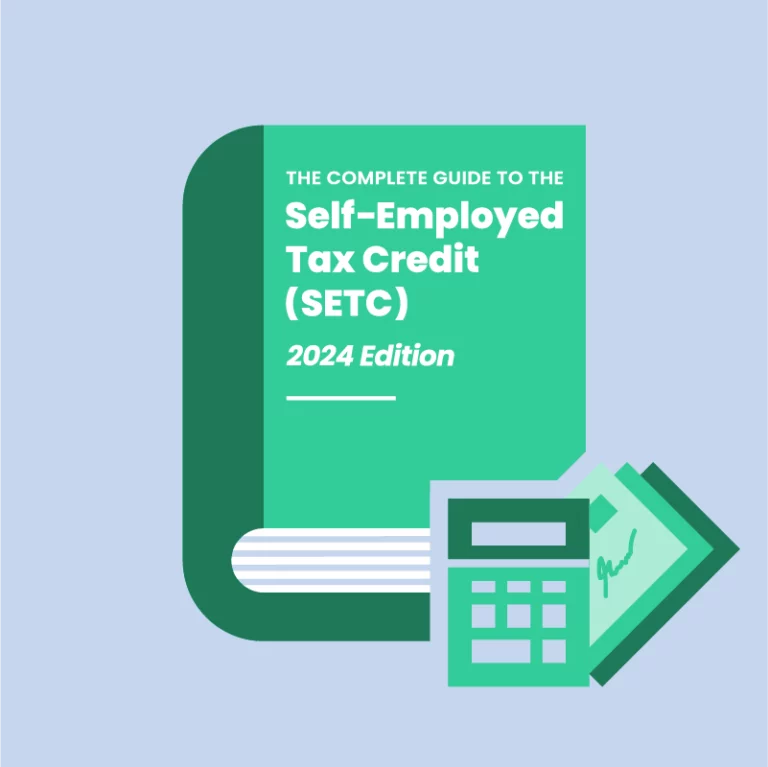When COVID-19 hit, it upended life for many self-employed folks and small business owners. To provide some relief, the government introduced new tax credits like the Self-Employed Tax Credit (SETC) through the Families First Coronavirus Response Act (FFCRA).
The SETC offers critical tax relief specifically for self-employed taxpayers who couldn’t work in 2020 and 2021 due to COVID-19. If you qualify, you could claim a refund of up to $32,220.
But with deadlines coming up in April 2024 and April 2025, we want to make sure you don’t miss out. So, let’s walk through the most common questions people have about the SETC so you can see if you qualify.
Do I Qualify for the SETC Tax Credit?
First things first — do you meet the basic eligibility criteria for the Self-Employed Tax Credit?
Who Can Claim the SETC?
The SETC is for self-employed folks like independent contractors, freelancers, gig workers, and small business owners who pay self-employment taxes.
For example, Uber drivers, real estate agents, consultants, freelance designers or writers, and delivery drivers could qualify. You get the idea. Sole proprietors are not eligible because they don’t pay self-employment taxes.
Are There Income Limits?
Nope, there are no specific income limits to qualify for the SETC. However, your average daily self-employment income will be used to calculate your final credit amount.
The only income-related rule is that you must have reported positive net self-employment income on Schedule SE for either 2020 or 2021 to claim the credit.
Can I Claim the SETC if I Had W-2 Income or Unemployment Benefits?
Yes, you can still claim the SETC if you have some W-2 wage income or received unemployment benefits. Your credit will just be reduced by any qualified leave wages paid by an employer. It also excludes any dates you got unemployment compensation.
Do I Need to Be a U.S. Citizen or a Permanent Resident?
Yes, you must be a U.S. citizen, permanent resident, or qualifying resident alien to claim the tax credit.
How Do I Claim the FFCRA Self-Employed Tax Credit?
Okay, so you meet the basic eligibility rules. Next, how do you go about claiming the SETC?
What’s the Process for Claiming the SETC?
To claim the SETC, you need to file IRS Form 7202 along with an amended income tax return (IRS Form 1040-X) for each year that applies. See Instructions for Form 7202 on the IRS’s website for more information.
Once filed, the IRS will acknowledge their acceptance of your claim within about three weeks and begin processing it. The IRS will then issue a refund via check or direct deposit.
Completing the required tax forms and collecting supporting documents can be cumbersome. 1st Capital Financial’s SETC Self-Service Platform makes it easy and ensures all your credit calculations and documentation are accurate.
What Tax Forms Do I Need to Submit?
There are two tax forms you need to submit for each year that applies. The first is IRS Form 7202, Credits for Sick Leave and Family Leave for Certain Self-Employed Individuals. This form captures your eligibility information and calculations.
The second tax form is IRS Form 1040-X, Amended U.S. Income Tax Return. You’ll attach your completed Form 7202 to this document.
Note that if you filed joint tax returns and both you and your spouse are eligible self-employed individuals, you must complete separate Form 7202s for each amended return.
What Supporting Documents Should I Gather?
The IRS stipulates that you must keep records and documentation that prove you’re self-employed and support your qualified sick and family leave equivalent calculations.
To meet this requirement, you should keep all the following that apply in your records:
- IRS 1099 Forms
- COVID-19 lab results
- Communications from doctors
- Communications from schools and childcare facilities
- Copies of quarantine orders
You should also keep copies of your original tax returns, including Schedule SEs, amended tax returns, and completed IRS Form 7202s.
When Is the Deadline for Claiming the SETC Tax Credit?
For the 2020 tax year (April 1, 2020, to March 31, 2021), you must submit your SETC claim by April 15, 2024.
For the 2021 tax year (April 1, 2021, to September 30, 2021), the deadline is April 15, 2025.
How Much Can I Get from the Self-Employed Tax Credit?
Now for the million-dollar question — how much money could the SETC be worth to you?
What’s the Maximum SETC Amount?
The total maximum credit for both 2020 and 2021 is $32,220. This accounts for your eligible sick leave and family leave equivalent days.
For 2020, the max is $5,110 for sick leave and $10,000 for family leave. For 2021, it’s $5,110 for sick leave and $12,000 for family leave.
How Is the SETC Calculated?
To calculate your SETC, you must determine your qualified sick and family leave equivalent amounts for 2020 and 2021 and add them together.
Your qualified sick leave equivalent amount is equal to the lesser of $511 per day or 100% of your average daily self-employment income times the number of days you were affected by COVID-19. A total of 20 days may be considered, including 10 days for the 2020 tax period and 10 days for the 2021 tax period.
Your qualified family leave equivalent amount is equal to the lesser of $200 per day or 67% of your average daily self-employment income times the number of days that you were caring for somebody affected by COVID-19. A total of 110 days may be considered, including 50 days for the 2020 tax period and 60 days for the 2021 tax period.
What if I Didn’t Miss Any Work Days?
Unfortunately, you can’t claim the SETC if you have no leave days impacted by COVID-19 restrictions, illness, or caregiving responsibilities. You must have qualifying leave days.
Other Important SETC Considerations
You probably have some other questions about the ins and outs of the Self-Employed Tax Credit.
Can I Amend a Previous SETC Claim?
Yes! You can file an amended tax return to correct any errors made on prior SETC claims. Just make sure to work with a knowledgeable tax pro to get everything right.
The same April 2024 and April 2025 deadlines apply whether you’re filing your first SETC claim or amending a previous submission.
Is the Self-Employed Tax Credit Considered Taxable Income?
Nope, the SETC does not count as taxable income. It gives you tax relief by directly reducing your tax liability, so you don’t have to claim the amount as income.
Can Both Spouses Claim the SETC?
Yes, if you file jointly, each spouse can claim their own SETC if you both meet the requirements as self-employed taxpayers.
Let Us Help With Your SETC Claim
The COVID-19 pandemic created immense financial hardship for self-employed folks who lost work in 2020 and 2021. The SETC provides up to $32,220 in relief.
Don’t miss out on claiming a self-employed tax break for 2020 and 2021. 1st Capital Financial’s streamlined online filing platform simplifies the complex IRS process so you can focus on your business instead of tax headaches. Get started using our SETC Self-Service Platform so you can take advantage of these credits before the deadline passes.
Claim Your SETC Refund Today




